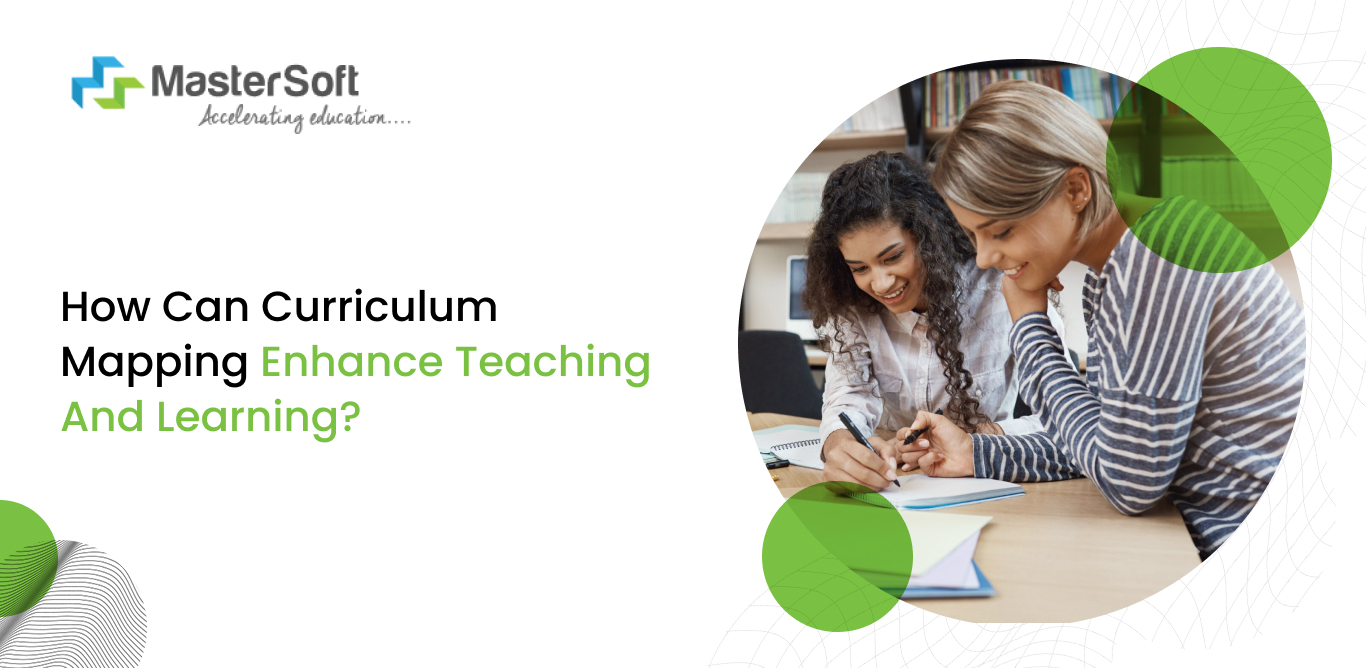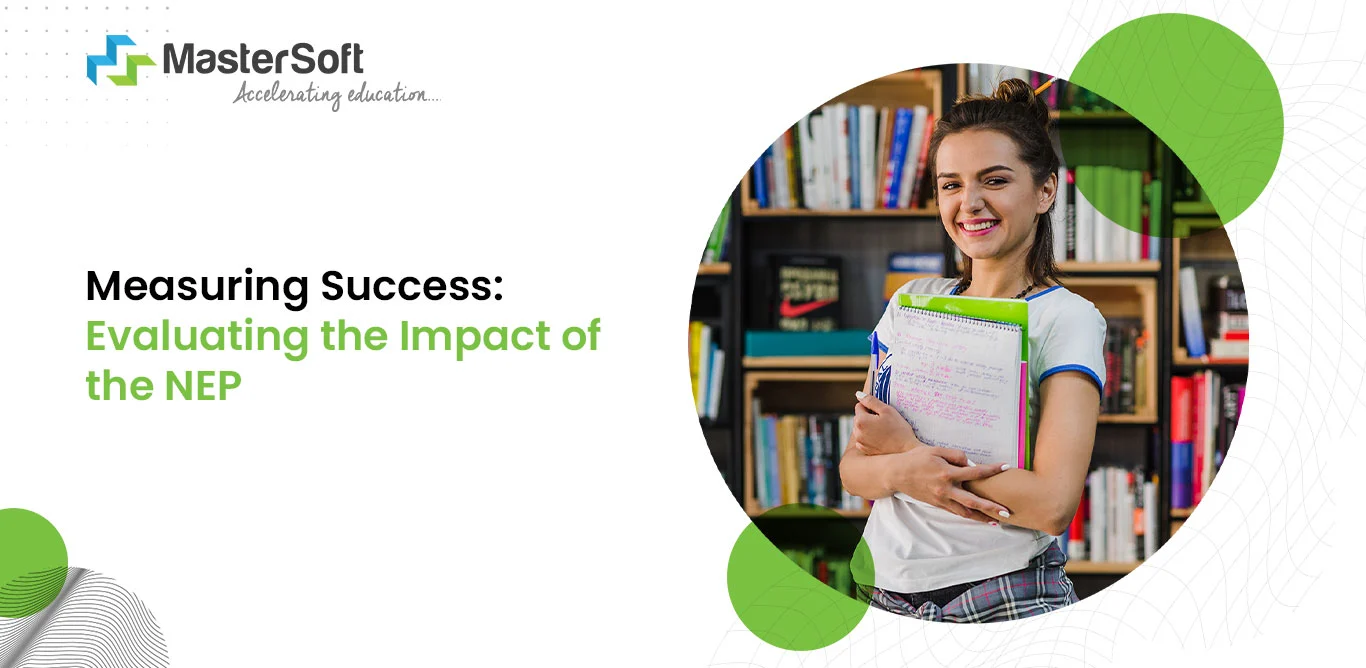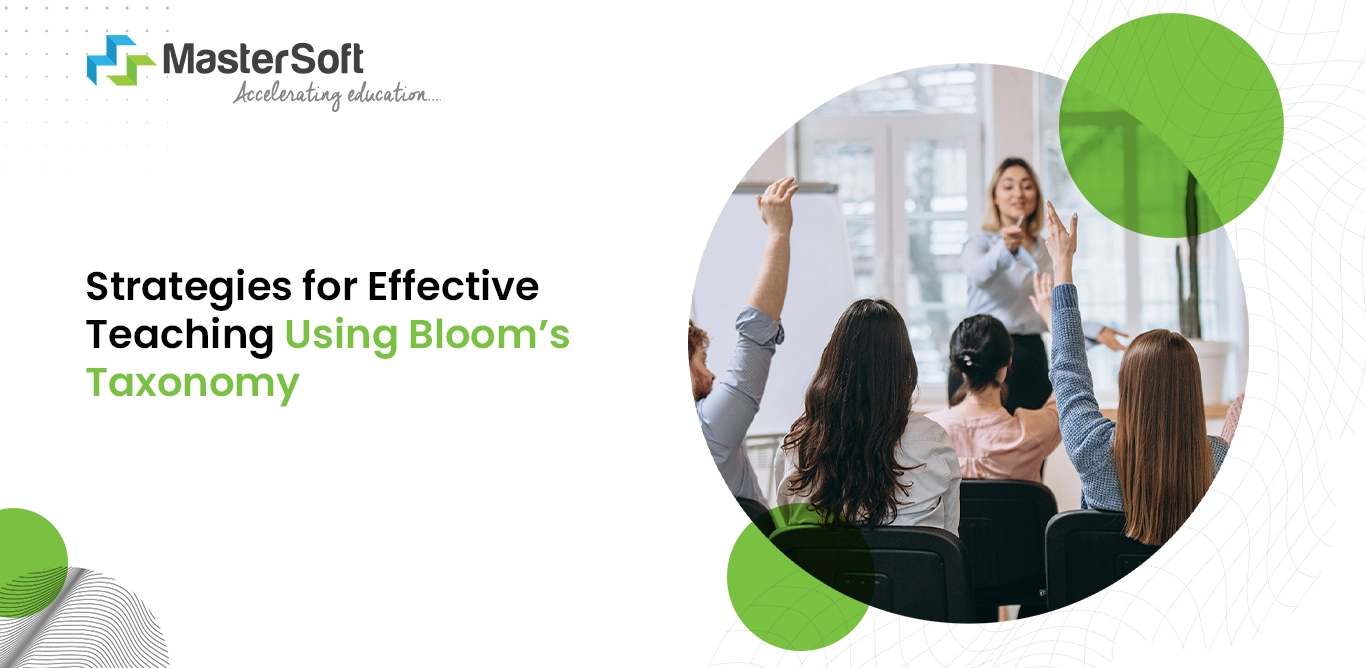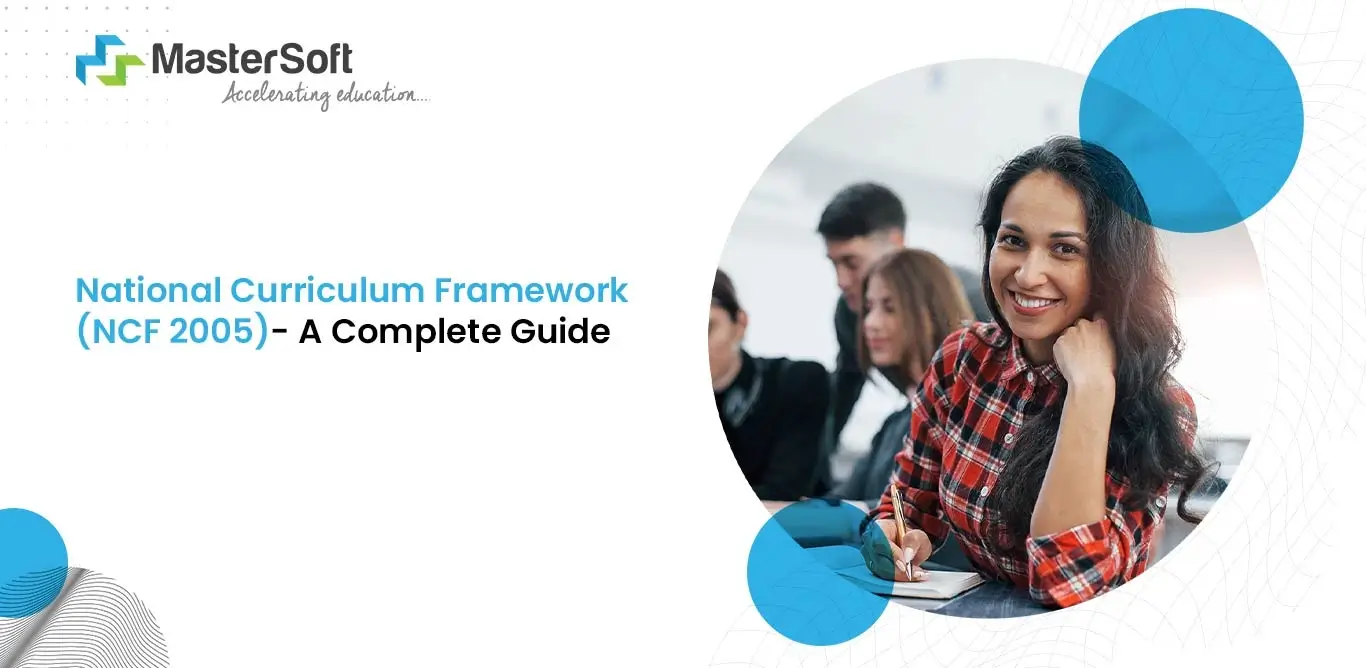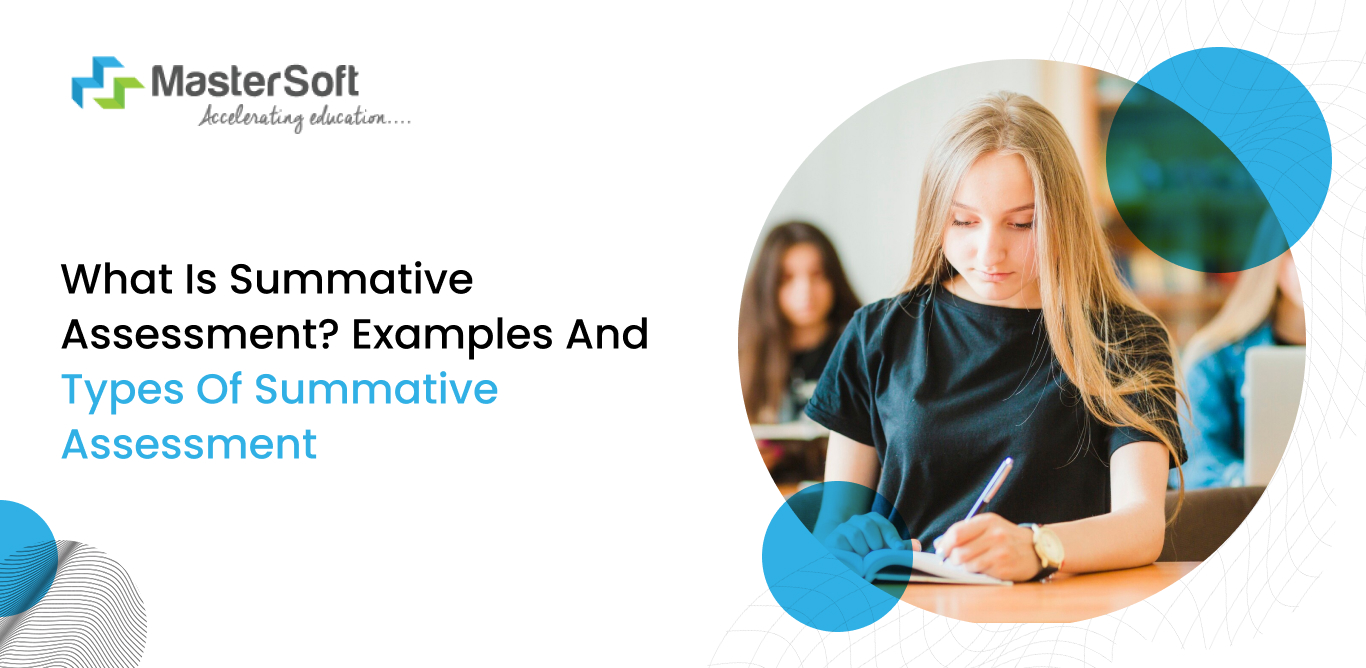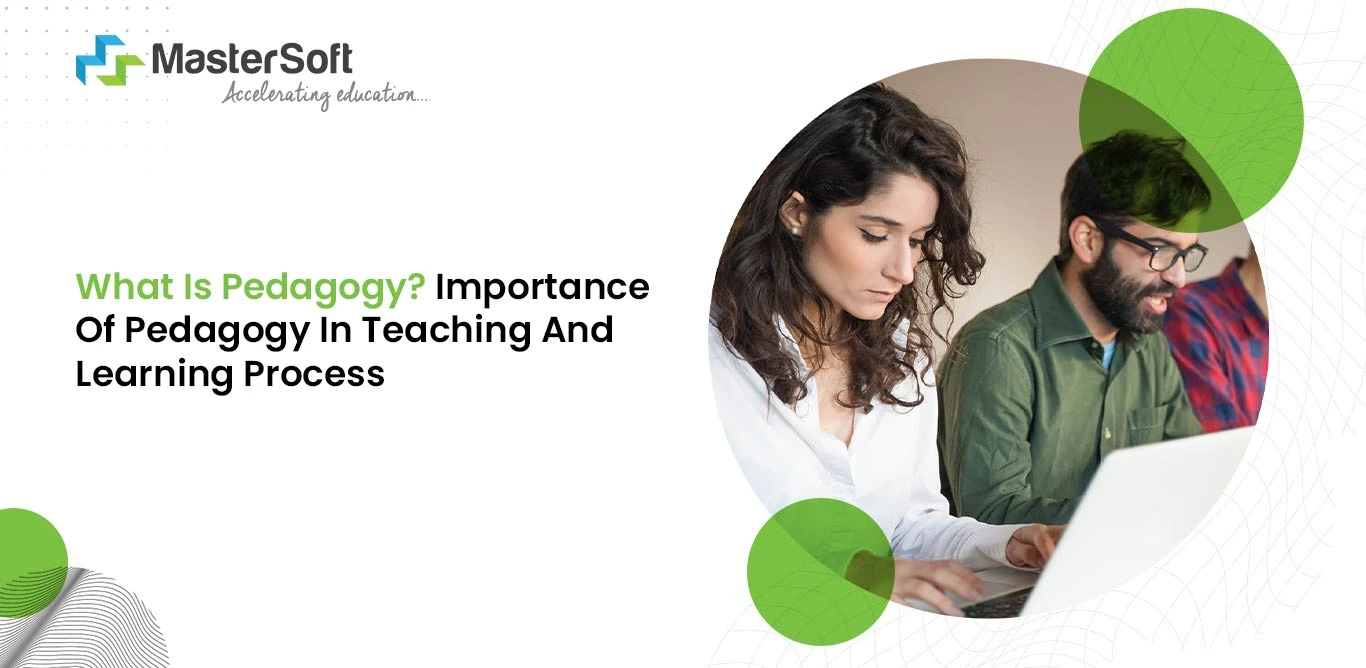29, April 2024
A syllabus is an essential document that lists the topics and content that students learn by the end of the year. But what about teachers? Is there a source of guidance that directs them in terms of techniques and methodologies?
Ineffective learning is one of the biggest drawbacks if the education process lacks a sense of direction and purpose. Therefore, curriculum mapping is a key procedure that helps to improve teaching delivery and boost student engagement.
What is curriculum mapping?
Curriculum mapping refers to incorporating educational techniques and resources into a course or programme to facilitate effective teaching and learning. A crucial part of the process includes drafting every detail of the course.
Some of the vital steps include educational reforms, modern pedagogies, instructional methodologies, assessments, and activities. It is noteworthy to point out that there are stark differences between a curriculum map and a lesson plan.
For instance, lesson plans are essential road maps that teachers create to specify what students need to learn. Also, it mentions the steps that they need to implement during the class; however, they need to identify the learning objectives.
On the other hand, a curriculum map deals with a more in-depth approach when it comes to pointing out educational goals.
What goes into the curriculum mapping process?
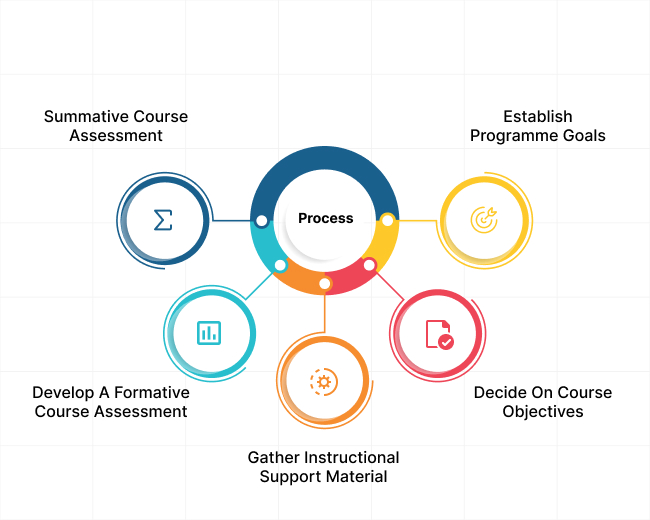
1. Establish programme goals
In the first and foremost step, educators must establish specific goals according to the course that they map. It helps to align the curriculum with the course requirements.
2. Decide on course objectives.
The skills and knowledge that students succeed at demonstrating by the end of the course are the course objectives. Hence, they are educational achievements that students accomplish by the end of the term.
For example, increased understanding and ability to apply and conduct research, utilise critical thinking, and use analytical ability to assess a situation.
3. Gather instructional support material
Teachers utilise textbooks, reference books, workbooks, etc. as appropriate instructional support material. At the same time, digitalized learning materials like e-books, PDFs, podcasts, and interviews are primary learning resources.
4. Develop a formative course assessment.
They can take advantage of modern tools like the learning management system to develop and share personalised assessments. Consequently, when they implement varied assessment methods, it will help them self-evaluate their progress.
5. Summative Course Assessment
Unlike formative assessments, which are a part of regular classroom sessions, summative assessments are formal exams. Hence, the schools conduct them in the middle of the year and towards the end of the course.
What Is Formative Assessment? Examples And Types Of Formative Assessment
What is the goal of curriculum mapping?
Clarity
Curriculum mapping gives insight into a particular curriculum, helping to determine its overall scope. Also, it helps administrators and educators figure out how various components, including topics, skills, subjects, and assessments, are in unison.
Hence, teachers gain clarity due to curriculum mapping and provide a systematic path for teaching and learning.
Meeting Standards
What pedagogies should teachers follow? What activities go well with the learning objectives? What are the best assessment techniques? These are some of the questions that the curriculum framework addresses deftly.
In fact, it helps curriculum drafters include content and activities that meet quality benchmarks and standards. As a result, teachers can identify core skills and knowledge as per the criteria as well as the gaps in the curriculum.
Curriculum Consistency
Mapping the curriculum allows educators and teachers to maintain consistency in the teaching and learning processes. Students across different grades, classes, and programs receive improved educational experiences.
Also, when educators understand the curriculum’s structure and objectives, it promotes collaboration and better instructional practices.
Curriculum Improvement
Educational trends are ever-changing and reflect in-demand knowledge and skills, and the curriculum must incorporate those. That is why curriculum mapping is important because it evaluates efficiency.
Also, it helps to identify areas of adjustment and enhancement, which in turn assists in making informed decisions regarding curriculum revisions. Additionally, it provides insight into making appropriate adjustments to instructional strategies and assessment methods.
Enhanced Communication
When institutes invest time and effort in curriculum mapping, it improves communication between administrators, students, educators, and other stakeholders. In fact, it provides a medium for discussing curriculum-related matters by highlighting the relevant points.
Furthermore, it encourages conversations regarding instructional approaches, subject topics, and assessment strategies.
How does curriculum mapping impact teaching and learning?
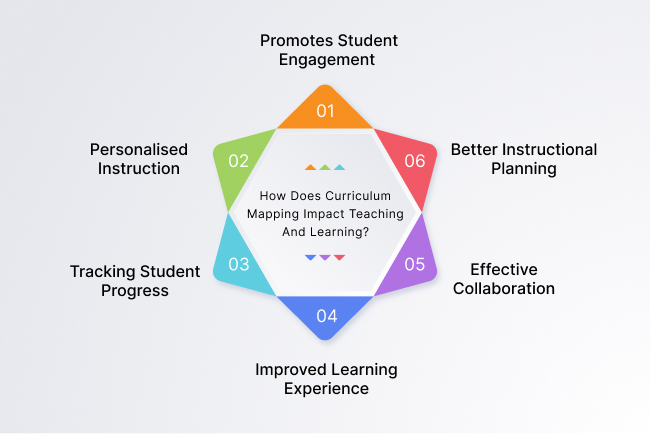
1. Promotes student engagement
When institutes follow the same syllabus or curriculum that undergoes little or no change, it leads to ineffective learning. In contrast, curriculum mapping instills a sense of direction and personalisation, which helps boost student engagement.
Furthermore, the curriculum mapping system enables teachers to use modern tools to make necessary changes in the teaching process. Also, students can see the curriculum’s visual representation and the connections between different topics and concepts.
As a result, it helps them make sense of the topic’s purpose and relevance, encouraging students to take ownership of their learning. When students begin to take an active interest in learning, they will inquire, engage, and participate.
2. Better Instructional Planning
An outdated and long-followed approach that occurs in many schools and colleges across the country is syllabus-centric teaching. The focus is more on finishing the chapter as fast as possible, with little to no focus on assessing individual students testing.
Wouldn’t it be great if there was a way to assess individual students? Tracking their learning progress is crucial to ensuring their understanding levels. However, a flexible instructional approach is imperative to achieve that goal.
And that is exactly what curriculum mapping provides; it helps to plan their lessons accordingly in the following ways:
- They can identify content inconsistencies.
- Assess students learning competencies and capabilities.
- Organise the subject topics in a systematic order.
- Stipulate adequate time for particular concepts.
Consequently, teachers can plan the instructional process properly while incorporating essential skills and knowledge and students' learning levels.
3. Effective Collaboration
Development or growth can never occur in isolation; rather, it occurs in joint collaboration. Hence, curriculum mapping stimulates collaboration between educators in the same school or across the district.
Moreover, teachers can share their curriculum maps, educational resources, and best practices, helping to gain feedback and insight from experts and peers. As a result, it helps to reduce inconsistencies and increase informed decision-making.
Effective development that improves teaching and learning practices is one of the major advantages.
4. Improved Learning Experience
Is the course content up-to-date with the set standards? Finding an answer to that is vital to assessing whether or not the content adds value to a student’s learning experience. Simultaneously, drawing a comparison between the last and current year’s course performance provides helpful insight.
For instance, it helps to highlight the areas that need further improvement to make the programme more relevant. Teachers can integrate e-learning elements such as online worksheets and documentaries to watch.
What Is E-Learning? Features And Benefits Of E-Learning Management System
Also, they can upload files, documents, and other resources to the curriculum maps and provide role-based access to students. Hence, students can access them, helping to complete their assignments and continue their learning.
5. Tracking student progress
Curriculum mapping provides assessment modules, enabling teachers to specify core parameters and concepts. Hence, when the course starts and if the students fail to fare well in the specified areas, teachers succeed in identifying them.
At the same time, they can gauge their progress from the start to the end of the term while evaluating their skill and competency levels.
6. Personalised Instruction
The one-size-fits-all approach is irrelevant and unproductive when it comes to student learning experiences. Therefore, the curriculum mapping system helps to figure out the specific requirements and learning styles of each student.
Additionally, clarifying the learning objectives and assessment enables teachers to provide personalised instruction according to students' learning abilities. What’s more, it helps students reach their full potential.
Let’s wrap it up,
The curriculum mapping system helps to establish continuous improvement by providing a mechanism to evaluate curriculum effectiveness. The system allows educators to obtain data on student performance and highlight areas for improvement.
Unsure about the curriculum mapping process? Connect with MasterSoft ERP solutions to streamline your curriculum mapping.
Mobile: 08448010216
Email:info@mastersofterp.com

